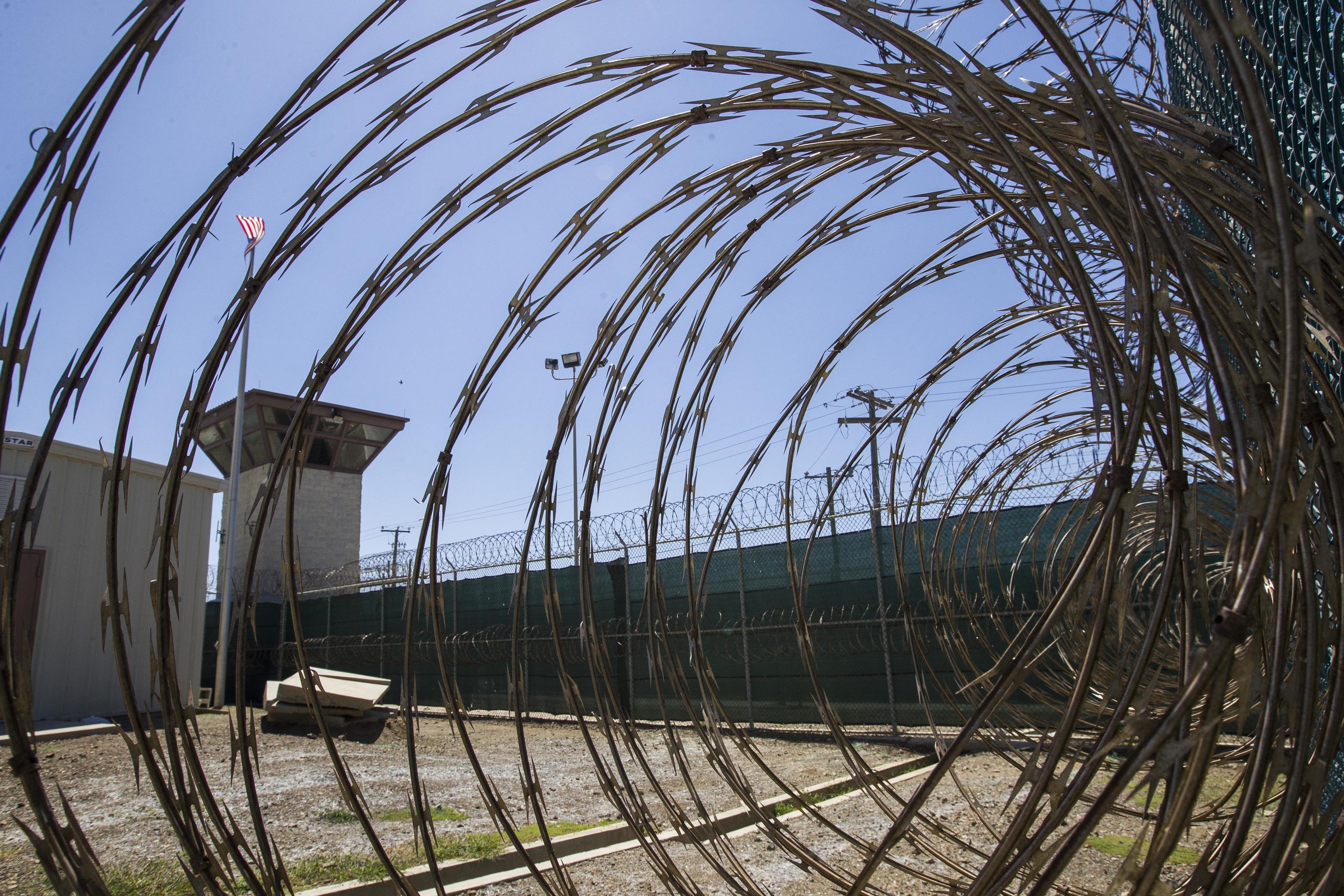The first immigrants, in deportation proceedings from the United States, will arrive at the Guantánamo base this Tuesday, in Cuba. It is not the first time that the US government has used these facilities, and in the 1980s and 1990s, there were even peaks with tens of thousands of people displaced by the war in Haiti or fleeing the Castro regime. However, everything surrounding Guantánamo, which since 9/11 and the Iraq war has remained in the collective imagination as a detention center for terrorists, is loaded with symbolism and intrigue.
The White House has confirmed today that it will begin to transport people on military planes from Texas. "The first flights from the United States to Guantánamo Bay with illegal migrants are underway," said the spokesperson for Donald Trump. The big difference from the past is that generally people picked up in rafts or boats or who had never set foot in the country were housed, or rather detained there. Now, on the other hand, it wants to use it massively as an internment center while sealing agreements with countries like El Salvador, which has agreed to place people in its prisons. Or with the countries of origin of the expelled individuals.
"There is plenty of space to accommodate many people, and we will use it. It is safer and cheaper. There are many countries that say they would be happy to host our prisoners," said the president from the Oval Office, stating that criminals like the person who a few days ago pushed a man onto the New York subway tracks can never be rehabilitated and become normal members of society.
The administration is aware of the symbolic value and the message it sends, both to those in the US who have received court orders or have been convicted, and to those who still aspire to enter without papers through the Mexican border. According to The Wall Street Journal, one of the flights left Fort Bliss in Texas at noon but with just a dozen immigrants on board. According to some estimates, in the past few weeks, around 40,000 immigrants have been detained in private detention centers and local jails across the country due to a lack of other facilities.
The government has announced that it will expand Guantánamo's facilities to accommodate up to 30,000 people, but the base is currently equipped to house only 120 migrants. Defense Secretary, Pete Hegseth, has indicated that those considered the most dangerous criminals could be taken to the detention centers currently housing 15 prisoners from the war on terrorism, including five men accused of planning the September 11 attacks. There are two buildings for this purpose with nearly 300 maximum-security cells. Hegseth, who served at the base during his time in the military, also mentioned in an interview that up to 6,000 non-criminal deportees could be housed "in the golf course," which is near the base's McDonald's and family housing. This was already done, with giant tents, in the mid-90s during one of the peak moments with rafters fleeing from Castro's Cuba.
In the past week, about 300 additional soldiers have been deployed to the base to provide security and start setting up tents and marquees for the detainees, and an equal number should arrive in the coming hours. According to the New York Times, US forces have set up 50 green army tents within a wire-fenced enclosure, next to a barracks-style building called the Migrant Operations Center.
The base is a fortress, but it is also isolated, and everything has to arrive by plane or ships. From bottled water to frozen food for the commissary to school supplies and government vehicles, everything arrives twice a month on a barge. Fresh fruits and vegetables for the 4,200 regular residents arrive on a weekly refrigerated flight. Occasionally, the Pentagon brings journalists for legal issues related to terrorism suspects, but the trips involve staying almost a week until there are return flights.
Over the weekend, Kristi Noem, the new Secretary of Homeland Security, hinted that the facility would be a resource for the agency. "We are creating certain capabilities," she said on television. "We appreciate the collaboration of the Department of Defense to bring it to the level needed to facilitate the repatriation of people to their countries. Guantánamo will host the worst of the worst," Noem said. "We have 30,000 beds for the worst illegal foreign criminals threatening the American people. Some of them are so bad that we don't even trust the countries to hold them, and since we don't want them to return, we will send them there, from where it is very difficult to leave."
The process is, in any case, very expensive. The first flight on Tuesday to Guantánamo Bay was carried out on a C-17 military plane, which the administration has used for deportations from the border, mainly to Guatemala and other Latin American countries, but also a few days ago to return about 100 Indian immigrants to their country, according to the Department of Homeland Security. According to government figures, flying a C-17 costs $28,500 per hour, compared to the $8,500 per hour for a standard flight by the US Immigration and Customs Enforcement. Flights to Guantánamo last approximately five hours. "It is not clear why officials used a military plane instead of one from the fleet already contracted with ICE," The Wall Street Journal points out.
Last year, the Biden administration signed a contract with the private prison company Akima for $163.4 million to manage the facility for the approximately three dozen immigrants it has housed on average at the Guantánamo detention center in recent years.
